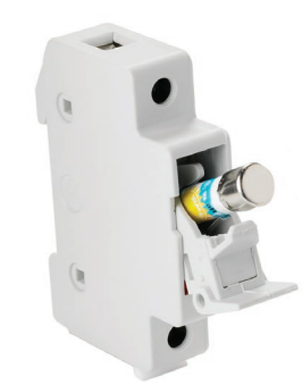
Fuse holders are critical components in electrical systems, designed to securely house fuses and provide a means for incorporating them into circuits. These devices ensure that fuses, which act as the primary protective elements against overcurrent and short circuits, can operate effectively and can be replaced or inspected with ease. This article explores the definition, characteristics, and applications of fuse holders across various industries, underlining their significance in maintaining system safety and reliability.
What are Fuse Holders?
A fuse holder is a device that provides a secure enclosure for a fuse, the safety device that interrupts the power flow in an electrical circuit when the current exceeds safe levels. By housing the fuse, the holder facilitates easy access for changing the fuse while protecting it from external damage and preventing unsafe exposure to live electrical contacts.
Characteristics and Types
Fuse holders come in various designs and sizes, tailored to different types of fuses and applications. They can be classified into several types based on their installation method, current capacity, and environmental protection:
- Panel Mount: Mounting these holders through openings in the panel provides direct access from the panel face, making them often used in control panels.
- PCB: Designed to be soldered directly onto printed circuit boards, these are used in compact electronic devices.
- In-line: Used in applications where fuses are required within a wire or cable, such as in automotive or marine environments.
Materials used for fuse holders range from durable plastics to ceramics and metals, depending on the required insulation properties and thermal resistance. Features such as snap lids or screw caps provide additional safety and convenience by securing the fuse in place and protecting it from dust and moisture.
Applications in Various Industries
- Automotive: Fuse holders in vehicles protect the electrical circuits that control lighting, engine functions, and in-car entertainment systems. They are designed to withstand vibrations and temperature fluctuations typical in automotive environments.
- Electrical Infrastructure: In residential and commercial buildings, they ensure that appliances and lighting systems are protected from potential electrical faults.
- Industrial Equipment: Industrial settings use high-capacity holders to safeguard machinery and heavy equipment from overcurrents, thereby preventing costly downtime and repairs.
- Renewable Energy: In solar and wind energy systems, fuse holders play a vital role in protecting the delicate electrical components that manage power flow from panels and turbines to batteries and the grid.
Conclusion
Fuse holders are indispensable in the effective management of electrical safety across various sectors. By providing a secure and accessible housing for fuses, they not only safeguard electrical systems against overcurrent and short circuits but also contribute to the overall durability and efficiency of these systems. Whether in automotive, residential, commercial, or industrial applications, the proper selection and maintenance of these holders are fundamental to ensuring that electrical systems are both safe and functional. As technology advances, the evolution of fuse holders continues to meet the new demands of sophisticated electrical systems, making them more reliable and easier to use than ever before.

